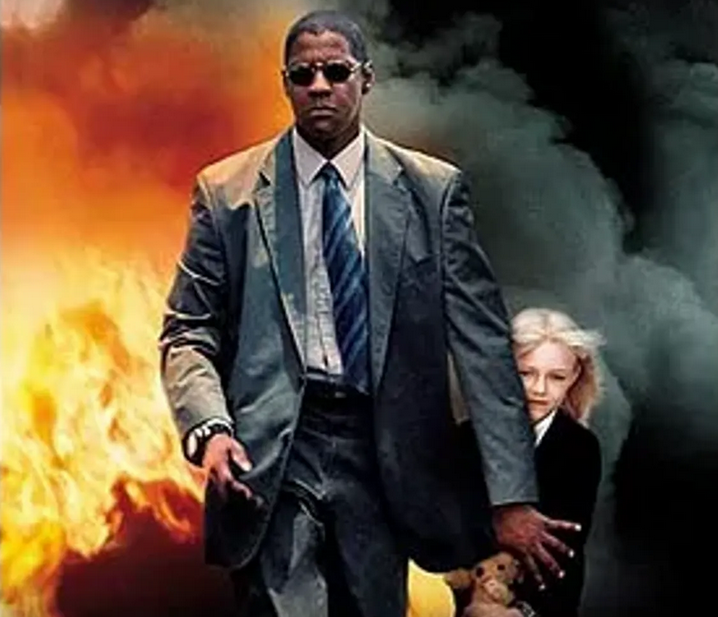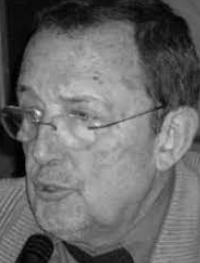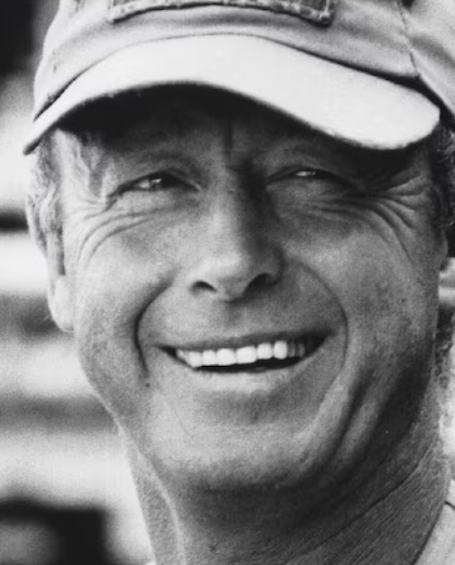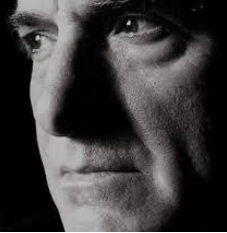
There is no such thing as tough. There is trained and untrained. — John Creasy
In 1968, the Italian screenwriter Sergio Donati co-wrote, with director Sergio Leone, the spaghetti-western classic Once Upon a Time in the West, starring Henry Fonda, Charles Bronson and Claudia Cardinale. In 1965 Donati had worked, uncredited, on the script for Leone’s For a Few Dollars More, starring Clint Eastwood, and Leone encouraged him to take up screenwriting full-time.
Joe Dolce appears in every Quadrant.
Click here to subscribe
Donati subsequently wrote for more than seventy films, one of which was the 1989 Australian film Blowing Hot and Cold, directed by Marc Gracie. Blowing Hot and Cold was the only film I ever had a lead acting role in, along with Peter Adams, well known for Cop Shop and Prisoner. The famous Italian actor Giancarlo Giannini was originally cast to play my character, Nino, back in 1984, but by the time the money was secured for the film, Giannini had too many commitments. The producer, Rosa Colosimo, told Woman’s Day:
Every time I raised the money, I would ring Rome to talk to Giancarlo … Then it would fall through and I would have to ring again. He said I was like migratory bird; once a year he would hear from me. The movie was on, then it was off. But when we organised the finance, he wasn’t available.
The director of Blowing Hot and Cold was to be the British-Australian Brian Trenchard-Smith, whom Quentin Tarantino once referred to as his “favourite obscure director” who had “great energy”. Trenchard-Smith rewrote and directed BMX Bandits (1983), introducing a fifteen-year-old Nicole Kidman. One of Trenchard-Smith’s mottos was: “Specialise in the difficult. No task too great, no budget too small.”
Trenchard-Smith has a brilliant sense of humour and I believe he would have done a tremendous job (without me in it, of course) had the film been greenlighted back in 1984. He told me, in an interview, his take on the script: “I saw [Blowing Hot and Cold] as a fun cross-cultural comedy, with sections to be shot in Italy. I would direct with more laughs, visual style and sex than They’re a Weird Mob.” He said when he left Australia for Hollywood:
I was possibly a medium-sized fish in one of cinema’s smaller ponds [and when I arrived] immediately became plankton. I believe I have now evolved into a sardine. My career goal is to become a dolphin, playfully cruising through a variety of  genres on adequate budgets.
genres on adequate budgets.
Two years before Blowing Hot and Cold, Sergio Donati (right) had co-written the script for a kidnapping thriller, Man on Fire (1987), starring Scott Glenn, Joe Pesci, Jonathan Pryce and Brooke Adams. It was based on the 1980 novel of the same name by A.J. Quinnell, which sold eight million copies.
Tony Scott had originally been asked to direct but the studio felt he didn’t have enough experience and instead chose the French director Élie Chouraqui. Chouraqui’s Man on Fire flopped at the box office with some of the worst reviews I have read. To add insult to injury, Scott came back to direct the 2004 remake of Man on Fire, starring Denzel Washington, which was a commercial success.
There have been four film adaptations of Quinnell’s novel. Here is a brief synopsis of the basic plot. I will then focus on the two main Hollywood interpretations and their deviations from the book.
The story is slightly in the style of The Godfather by Mario Puzo, with its intimate look at complexities between an Italian family and organised crime. The novel opens with the “Para’s Prayer”, by French paratrooper André Zirhnheld, a member of the original SAS and the first French paratrooper officer killed in action, which I featured in my review of SAS: Rogue Heroes in the September 2023 Quadrant:
Give me God what you still have,
Give me what no one asks for…
The story begins in Milan in the late 1970s. A wealthy Italian couple is experiencing a financial crisis. The wife, Rika, wants a bodyguard for their young daughter, Pinta. Her husband, Ettore, is told by his solicitor, Vico, that the only way they can get kidnap insurance for their daughter is by hiring a bodyguard. But Rika wants a bodyguard for other reasons: all her wealthy friends have them.
When the subject of kidnapping and the Mafia comes up, his lawyer winces, “The Mafia! Such a melodramatic word. It conjures up a bunch of Sicilian peasants stealing olive oil.”
Ettore finds a “premium” bodyguard—an inexpensive but well-trained ex-soldier, who has problems that prevent him from commanding higher fees. John Creasy is an alcoholic American ex-Marine who speaks fluent Italian. He was discharged for striking an officer and spent years in the French Foreign Legion where he received the Croix de Guerre, awarded for acts of heroism in combat.
Quinnell writes, “The Legion had a history of civil engineering, particularly road building. In the early days in Algeria, they had, like the Romans, built roads to help pacify the country. They had carried on this tradition in other parts of Africa and in Vietnam.” Creasy’s commander in Vietnam referred to him as “the most effective soldier I have ever seen”.
He begins working for the family guarding Pinta, but initially has a difficult time with her. She challenges him and asks difficult questions which cause him to re-examine his life. He gradually warms to her and teaches her better competitive track technique, enabling her to win her school competition. She grows fond of him. Gradually, he cuts back on his drinking.
Creasy had been a mercenary in the Belgian Congo. He has cigarette burns all over his hands from torture in a POW camp. When Pinta asks about the scars, he says, “I once had a conversation with a mean man. He was smoking and didn’t have an ashtray.”
One night Pinta’s mother, Rika, comes to Creasy’s room and seduces him. Later, through a combination of guilt and jealousy of his growing relationship with Pinta, she tells her husband, Ettore, to fire him.
But before this can happen, Pinta is kidnapped from her school by armed gunmen. Creasy, trying to protect her, is badly wounded in the stomach and a lung. When he emerges from a coma, he is told that Pinta is dead, found in the boot of a car, choked to death and raped.
Creasy vows revenge against the entire crime chain responsible. He goes to Malta to recuperate further and train for his mission of revenge. He is asked to train the local police force in fighting, tactics and weapons. He also falls in love with Nadia, the daughter of a farmer with whom he is staying.
He acquires a formidable arsenal of illegal guns and returns to Italy via Marseilles. His plan is to abduct one of Pinta’s kidnappers and force him to reveal who was behind her abduction.
The Mafia has an impenetrable presence in Italy. Quinnell writes, “Only Mussolini, in the 1930s, had any success and only because he used ‘fascist methods’. After Mussolini, it came back stronger than ever.”
Creasy will use similar methods: tactics the police cannot use. He says, “These people use it as a weapon but are not used to facing it themselves.” He plans to move from one person to the next, extracting information until he identifies all of them. He says, “Unlike the police, my aim is not to collect evidence and bring them to court. My aim is to kill them.”
After dispatching a few of the gang members, Creasy discovers that Pinta’s father, Ettore, was the one who set up the kidnapping for the ransom money, to pay his debts, in a deal with the mob. He tells Rika in front of her husband. She is outraged. Ettore later commits suicide by jumping off his estate balcony.
Nadia, back in Malta, discovers she is pregnant with Creasy’s child.
Creasy’s success in cutting a violent swathe through the mafioso ranks has made him an anti-Mafia celebrity in Rome. Graffiti and T-shirts say, “Go Creasy!”
In the final stage of his mission, he parachutes into the well-fortified villa of the godfather of the mob and kills everyone there. But he is again badly wounded and is airlifted by helicopter to an intensive care hospital and given little chance of survival. The final chapter is Creasy’s funeral.
In the novel’s epilogue, a pregnant woman has a rendezvous on an island pier with a large man. Neither of the couple is named but the implication is that they are Nadia and Creasy, who has somehow survived and is now living under a new identity.
A.J. Quinnell was the pen-name of English novelist Philip Nicholson (1940–2005). He adopted the pseudonym to protect his privacy in the event he became a successful author. Good planning on his part! Man on Fire (1980), his first novel, was an international commercial success. It is said he wrote late at night until early morning and always wrote standing up.
As a teenager, holidaying with his parents in Tanzania, he once had a chance to meet Ernest Hemingway. Hemingway declined the meeting, saying, “I have no time for f***ing kids.”
Nicholson later worked in the textile industry in Hong Kong where he met mercenaries and members of the French Foreign Legion.
Once, on an overseas flight, he helped an Italian passenger who was having a heart attack by using his influence and contacts in Hong Kong to get the man admitted to a private hospital, saving his life. The man’s Italian relatives were grateful and assisted him with introductions to anti-Mafia lawyers and actual members of the mob who helped him with the details of his book.
(While researching this article, I found a reference to a John Creasey, who I at first thought was one of Nicholson’s pen-names. This Creasey was also an extremely successful British author, and MBE, who wrote over 600 books using twenty-eight different pseudonyms—including two women, for seventeen romance novels.)
Quinnell’s book was inspired by two actual high-profile abductions. The first was the kidnapping of the son of a wealthy Singaporean businessman by a Triad. The father refused to pay, and the kidnappers killed the boy. The second influence was the kidnapping of John Paul Getty III.
Paul Getty I, one of the wealthiest men in the world, received a piece of his rebel grandson’s ear in the mail. Reluctant at first, and negotiating with the kidnappers face-to-face, he finally settled on two million dollars and secured a safe release. Getty’s story has been brilliantly told in the TV series Trust: The Getty Family Saga, with Donald Southerland as J.P. Getty and Hillary Swank as his wife, Gail Getty, which I will be writing about in a future issue of Quadrant.
Quinnell wrote four sequels in the Creasy series. The Perfect Kill (1992) has Creasy as a middle-aged retired mercenary whose wife Nadia and four-year-old daughter are killed in a terrorist attack on a Pan American plane. He adopts a seventeen-year-old boy and teaches him his lethal skills to seek revenge. In The Blue Ring (1993), Creasy meets Juliet, a thirteen-year-old heroin addict, who is being exploited by a drug and prostitution cartel. Black Horn (1994) finds Creasy discovering a link between the  sniper death of a woman in Africa and the murder of a Hong Kong air hostess’s entire family. In the final instalment, Message from Hell (1996), Creasy returns to Vietnam and Cambodia to rescue a US soldier taken prisoner twenty-six years ago.
sniper death of a woman in Africa and the murder of a Hong Kong air hostess’s entire family. In the final instalment, Message from Hell (1996), Creasy returns to Vietnam and Cambodia to rescue a US soldier taken prisoner twenty-six years ago.
The first film adaptation of Man on Fire went through many twists and turns. Tony Scott (left) was originally picked to direct. Scott wanted either Marlon Brando or Robert Duvall to play Creasy. But producer Arnon Milchan, an Israeli businessman and former spy for Israel’s top-secret intelligence agency, Lekem, wanted Sergio Leone to direct and Robert Mitchum to play the lead role. Scott was eliminated because the studio felt he didn’t have the experience. This is odd because Scott had directed Top Gun, with Tom Cruise, in 1986, a year earlier, which was a blockbuster hit. But perhaps production decisions, which traditionally have long lead times, were made before Top Gun was released. In any case, I’m sure the studio were soon kicking themselves. The movie was finally directed by Élie Chouraqui, with Scott Glenn playing Creasy and Joe Pesci, Brooke Adams, Jonathan Pryce and Danny Aiello in supporting roles.
In the film, which takes place in Italy, Creasy’s first name is Christian, not John, and he is an ex-CIA agent. The daughter’s name is Sam. Creasy is psychologically broken because of what he experienced in Vietnam. Sam is kidnapped and abused over a period of several weeks. Creasy spends the last third of the film limping badly due to the gunshot wounds he received while trying to protect her. He finally rescues Sam but she is so traumatised by her ordeal that she has to be institutionalised. In the final sequence, Creasy visits her in the hospital.
Leonard Klady of the Los Angeles Times said that the film’s script “limps along as badly as its protagonist”. Quinnell was mightily unimpressed by this film adaptation. His obituary stated:
The screenplay went through several transitions under Italian-French direction. At one stage, reading the script, [Quinnell] mentioned that it did not appear to be following the line of the book. The script-writers replied: “You mean, there’s a book …?” [Quinnell] said that the film “was so bad it became a cult movie in a European country. The director had never read the book and when I travelled to Paris to see the finished product I couldn’t recognise anything I wrote.”
The second adaptation of Man on Fire (2004), directed by Tony Scott, who had been passed over seventeen years earlier for the first one, starred Denzel Washington as John Creasy. The location was moved to Mexico, where Scott felt the recent epidemic of kidnappings there made it more relevant. Pinta has been renamed as Lupita, known as Pita. Creasy is still an alcoholic, psychologically damaged from his war experiences, and carries a Bible with him which he occasionally quotes from. One night in a drunken stupor, he tries to shoot himself in the head with his pistol and even though the firing pin hits the cartridge dead-centre, the gun misfires. He takes this as a sign that he is supposed to live. Pita, his young charge, helps him with his transformation back to a whole person.
In this adaptation, Pita is a swimmer, not a runner. Creasy identifies gun-shyness, from the loud crack of the starting pistol, as the single factor that keeps her from achieving her best results, and helps her overcome it. She goes on to win her school championship. By way of thanks, she gives him a St Jude medallion. Pita is then kidnapped by a cartel known as La Hermandad, led by Daniel Sánchez and his brother, Aurelio.
In a major diversion from the novel, Creasy rescues Pita from the cartel, returning her to her mother, but badly wounded, he exchanges himself for her in a swap. He dies, clutching his medallion, while being transported in the cartel’s car to the Sánchez headquarters.
Kevin Freese, of the US Army Foreign Military Studies Office, said: “It appears that the allusion of the fictional Sánchez brothers, with the real Arizmendi brothers, escaped the comprehension of much of the audience.” Arizmendi López was a corrupt police officer, a kidnapper and serial killer in the 1980s, in Morelos, Mexico, responsible for at least eighteen abductions and killings. Nicknamed “El Mochaorejas” (The Ear Chopper), he earned over $40 million in ransom money. He was captured in 1998 by Mexican authorities and sentenced to forty-years-to-life in prison.
Quinnell approved of Scott’s adaptation, because it used many of his own lines, and he “loved the chemistry between Creasy and the girl”.
Tony Scott was an English film director and producer, the younger brother of the acclaimed director Sir Ridley Scott. Tony Scott had originally intended to become a painter. His first major Hollywood film was The Hunger (1983) with David Bowie, which was unfavourably reviewed at the time, but has since become a cult classic. Scott remarked, “I never read any press after The Hunger.”
Long before that, however, Scott created a small masterpiece—a little-known movie called Loving Memory (1970), which the Australian director Bruce Beresford considers Scott’s best film. Beresford had worked for the British Film Institute (BFI) for six years in the late 1960s, running their Film Production Board, which was “aimed at helping novice film-makers with their first efforts”. He told me in an interview:
A number of film-makers had their start through the BFI Production Board, the most notable being Ridley Scott, Stephen Frears, Mike Leigh, Nicholas Broomfield and Tony Scott. [Tony Scott] came to me at the BFI production office in Waterloo with the script of a feature film, Loving Memory. He drew with great skill, just like his brother Ridley, and had storyboarded the entire film—a grim story set in Tony’s native Northumberland. I was most impressed. I still am. A recent DVD of Loving Memory, issued by the BFI, presents a film that has not dated but remains a powerful and strangely beautiful work.
Loving Memory is short on dialogue but long on monochromatic visual splendour; pure cinema, much in the sensibility of Kurosawa or Tarkovsky.
An elderly couple, while out for a drive in the remote countryside of Northumberland, accidentally hit and kill a young man on a bicycle. They are alone and unobserved. They gently lift the dead boy into their car and drive off.
At their stone home, the old woman dresses the young man in the uniform of her own son, who was badly wounded in the war and had died there at home. She positions him in a chair at the breakfast table and spends the next few days washing him and quietly telling him stories about her son. Her husband works as a miner during the days and spends the evenings building a wooden coffin for the body.
The woman assures the dead boy that they will bury him up on the nearby hill next to their son. The coffin is completed, the boy’s body placed in it, the top nailed down and the old man pushes it in a wooden wheelbarrow to the top of the hill where he has dug a deep rectangular hole next to a cross where their son is buried. He tips the body into the grave and mounds the earth up over it. The couple sit together in silence at the two graves.
The cinematographer for Loving Memory was Chris Menges, who later won Academy Awards for The Killing Fields (1984) and The Mission (1986). Scott’s subsequent stellar career in Hollywood included Top Gun (1986), Crimson Tide (1995), Enemy of the State (1998), Déjà Vu (2006) and Unstoppable (2010). Scott once remarked:
The most frightening thing I do in my life is getting up and shooting movies … that fear motivates me, and I enjoy that fear. I’m perverse in that way. I do other things. I’ve rock-climbed all my life. Whenever I finish a movie, I do multi-day ascents, I go hang on a wall in Yosemite. That fear is tangible. That’s black and white. I can make this hold or that hold. The other fear is intangible, it’s very abstract, and that’s more frightening.
In 2012, Scott committed suicide by jumping off the Vincent Thomas Bridge in Los Angeles. The cause of death was listed as “multiple blunt force injuries” and the coroner said that there was “no anatomic evidence of [cancer] identified”, but in 2014 Scott’s brother said he had been “fighting a lengthy battle with cancer—a diagnosis the family elected to keep private during his treatments and in the immediate wake of his death”.
The novel Man on Fire is divided into four books or sections. The whole of Book Two is devoted, in detail, to Creasy’s recuperation in Malta and his relationship with Nadia, the daughter of his host. It makes extremely slow reading. His love affair with Nadia has been omitted from all the screen adaptations.
It is pretty clear why Quinnell couldn’t recognise his book from the 1987 film. But I’m sure he was seduced, as were the rest of us, by Scott’s dramatic and action-packed direction of the 2004 remake, even though that one also diverged from the original story. The money Quinnell received from the film’s huge success wouldn’t have hurt.
The Italian screenwriter Sergio Donati once famously said, in an interview with the Canadian-Danish film-maker Mikael Colville-Andersen:
What is film? In the first act, you hang a man up in a tree. In the second act, you throw stones at him. In the third act, he falls down. If he is alive, it is a comedy. If he is dead, it is a drama.
Let me add to that: if he doesn’t fall down and is still alive, he’s probably the film-maker.
There were two other film adaptions of Man on Fire, both made in India in 2005. Aanai (Order) is in Tamil. Sify wrote, “What could have been an edge-of-the-seat thriller ends up as a badly made mass-masala movie.” Ek Ajnabee (A Stranger) is in Hindi, and is excellent. It was positively reviewed and selected for the Bangkok Film Festival.
Special thanks to Bruce Beresford, director of Driving Miss Daisy, winner of the 1990 Academy Award for Best Picture. Bruce has written a wonderfully entertaining book, Josh Hartnett Definitely Wants to do This … True Stories from a Life in the Screen Trade (2007). Brian Trenchard-Smith is the author of Adventures in the B Movie Trade. His website is https://briantrenchard-smith.com
 Sign In
Sign In 0 Items (
0 Items ( Search
Search










Great informative review Joe. Man on Fire is a five-star movie in my view. Seen it four or five times. Mind you, Denzel Washington is so good in every movie I’ve seen him in that he probably adds a ‘star’ to any movie.
He does , Peter , good in everything , and not militant off screen either !
Alas, Peter, his latest, Equalizer 3, drops the ball. Blame the director.
A timely reminder to watch it – I’ve been remiss.
.
Others disagree with RF’s assessment, eg
.
The Equalizer 3 received generally positive reviews from critics and has grossed $191 million worldwide against a $70 million budget, becoming a commercial success like its two predecessors.
Great film , Washington obviously a Scott favourite too (and one of mine) . Tony also directed “True Romance” , a gem written by Tarantino with top performances by all the cast with the ghost of Elvis influencing Slater’s character .
Gotta say, loved True Romance too. Must see it again.
Once Upon a Time in the West is my all time favourite film.
And tangentially, The Equalizer movies are fantastic.
I enjoyed Man on Fire, but that was in spite of Scott’s direction, the editing and the camera work, which was headache inducing garnish. I guess visual pyrotechnics are Scott’s one wood. Also, the movie was slow off the blocks; it took an age to get around to Denzel’s core business of rubbing out scum bags.
PS: I’ve love Brian Trenchard Smith ever since I saw Hospitals Burn in a safety induction on my first day in the workforce.